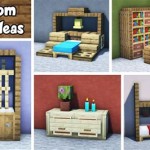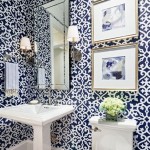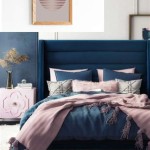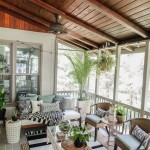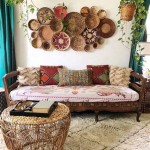Room and Décor
When it comes to interior design, the room and décor play a crucial role in creating a space that exudes functionality, style, and comfort. Room design encompasses the overall layout, furniture arrangement, and color scheme, while décor includes the decorative elements that add personality and ambiance to the space.
Room Design
Effective room design begins with understanding the purpose of the space and the flow of traffic. Proper furniture arrangement optimizes functionality by ensuring easy movement and access to key areas. The scale and size of the furniture should be proportionate to the room dimensions, creating a harmonious balance. The color scheme sets the tone and mood of the room, considering natural light sources and desired ambiance. Lighting plays a significant role in enhancing the room's overall design, providing both functional and decorative illumination.
Décor
Décor adds layers of style and personalization to a room. Textiles, such as curtains, upholstery, and rugs, introduce color, texture, and warmth. Artwork, including paintings, sculptures, and photographs, adds visual interest and reflects the owner's taste. Accessories, such as vases, lamps, and objets d'art, complete the décor scheme and provide unique accents to the space. Plants bring life and a touch of nature into the room, adding freshness and a sense of tranquility.
Balancing Aesthetics and Functionality
The key to successful room and décor is balancing aesthetics and functionality. A room should be both visually appealing and practically efficient. Furniture should be comfortable and supportive, while décor pieces should enhance the overall design without compromising functionality. Lighting should be adequate for tasks, yet not overly harsh or glaring. Accessories should be chosen with purpose, ensuring they serve a practical or decorative function.
Choosing a Style
The choice of room and décor style depends on personal preferences, lifestyle, and the architectural features of the space. Modern styles emphasize clean lines, minimalism, and neutral colors. Traditional styles incorporate classic elements, such as ornate furniture, antique accents, and rich fabrics. Contemporary styles blend modern and traditional elements, creating a timeless and versatile look. Transitional styles offer a balance between classic and modern, allowing for flexibility in décor choices.
Creating a Focal Point
A focal point is an element within a room that draws the eye and becomes the center of attention. This could be a fireplace, an architectural feature, a piece of furniture, or a work of art. The focal point should be proportionate to the size of the room and enhance the overall design scheme.
Accessorizing
Accessorizing is the final step in completing the room and décor. Accessories add personality and can be easily changed to update the look of the space. In choosing accessories, consider scale, color, texture, and balance. A mixture of materials, such as glass, metal, and wood, adds visual interest. Display accessories in groupings or vignettes to create a cohesive look.
By carefully considering the principles of room and décor, homeowners can create spaces that are both functional and inviting. A well-designed room exudes a sense of style, comfort, and personality, enhancing the overall living experience.

20 Diy Room Decor Ideas For The Win Unique With S

Aesthetic Roomcore Room Decor Dorm Accessories

How To Decorate Your Bedroom In Bohemian Style College Decor Dorm Room Wall Walls

Take A Look At These Diy Room Decor Ideas And Transform Your Home

26 Designer Guest Bedroom Ideas And Essentials

19 Bedroom Decoration Ideas Diy Crafts Blog Comfy Living Room Decor Design

20 Aesthetic Room Decor Ideas For Your Home In 2025 Designcafe

Aesthetic Roomcore Room Decor Dorm Accessories

Take A Look At These Diy Room Decor Ideas And Transform Your Home

38 Cool Kids Room Ideas How To Decorate A Child S Bedroom
